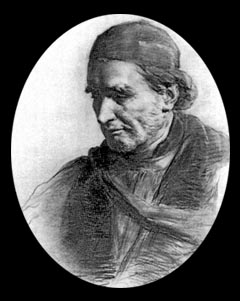
|
||
|
|
New This Week
Everything new is here.
Basics
Start here
Anglicans believe . . .
The Prayer Book
The Bible
News
News Centre
News archive
Newspapers online
Over to you . . .
Add a site to AO
Tell us what you think
Link to AO
Resources
Resources A to Z, including
Book of Common Prayer
Education
Exchanges
Liturgy
Theology
Vacancies
Youth
and much more ...
Worldwide Anglicanism
Anglican Communion
In full communion
Not in the Communion
Dioceses and Parishes
Africa
Australia
Canada
England
Europe
Ireland
Japan
New Zealand
Scotland
USA
Wales
World
Anglicans Online
Archives
Staff
Awards and Publicity
Beginnings, AO Today
Sponsors
Hallo again to all.
First, there was a new book reviewed in The Spectator, called 'The Bishops', by Trevor Beeson. (See New This Week for more on it.)
Next there was the favoured liturgical 'style', as expressed by our readers who filled out our little survey: 'some spike is good'.
Then there was the announcement of an online text of the biography of E B Pusey, by Henry Liddon, at the vast and admirable Project Canterbury.
 |
|
by George Richmond, RA. |
And, finally, there was an advert announcing the search for a principal of Pusey House, Oxford. All these seemed to suggest that most compelling of subjects: Anglo-Catholics.
But ... Just who were they? Did 'Anglo-Catholics' spring full-blown from the head (or heart or spleen) of the Church of England, to startle the world with their brilliance and their daring? Well, no. (Potted history coming up, which involves massive generalising.) Deep roots began during the Elizabeth and Jacobean period, with Richard Hooker and John Cosin, continuing through to the Caroline Divines (so called from the Latin 'Carolus', for Charles). The roots extend to some of the great non-Juring bishops and writers, and on to the mystic spirituality of Thomas Ken and Nicholas Ferrar, then continuing with a number of brilliant scholars and controversialists of the late 17th and early 18th century. The later 18th century and early 19th century saw the most direct influencers of the Oxford Movement, in particular, the too-short-lived Hugh James Rose.
What we now call, rather messily, 'Anglo-Catholics' are a group shaped and shaded and coloured by personalities and variously-named movements and parties, ever since the development of the English church under the Elizabethan Settlement. Ceremonial—something we think of as a characteristically defining point of Anglo-Catholics—is a far later development in Anglo-Catholic history. Until roughly 1865 (a fairly arbitrary date, but it will do), the Catholic movement in the Anglican Church was defined far more by doctrine than by 'man millinery', as an ECUSA High-Church bishop termed it. Only in the later 19th century did messy public fights over surplices, candles, ornaments, of one kind or another, produce the battle lines of party that most of us are familiar with. For far longer the battles were over abstruse theological points that would send most of us today into a quick and deep slumber.
But no matter how complex the Anglo-Catholic lineage, surely a dividing line can be drawn at the infamous Tract 90. At that point, issues that separated the older High-Church party and the pushy Tractarians became clearer and the possibility of compromise became less likely. After the defection of Newman to the Roman Church—along with many of his high-profile followers—the men and women who remained Anglican had some idea, at least for a time, of how far the boundaries could be moved without danger. But as with all things in the church, the boundaries have now moved. Candles, crosses, altars, and flowers are no longer the weapons of battle for Anglo-Catholics. Those 'novelties which disturb our peace' have become the norm.
Today there is perhaps more dispute about who has right and title to the name 'Anglo-Catholic' in the Anglican Church. We see a range of differing positions and understanding of the word, from the rallying cry of the Affirming Catholicism movement of the church to the various 'Orthodox Anglican' groups. The weapons of this dispute are press releases, web sites, resolutions and legislation for or against [insert your issue here]. In this complex 21st century, where all the givens about Christianity have dissolved or are dissolving before our eyes*, the luxury of any party position may be something our beloved Communion can ill afford. The need for us to define Christianity to the world, clearly and vigorously and compellingly—as we understand it, through our Anglican heritage—may cause us eventually to leave behind the party games. But only the games, please. The heritage and history of the colouring of our communion should be better known by all of us. Although it seems to us that the Catholic party can claim the most intriguing characters, every movement has its heroes and heroines. Would that we come to know some of them well, from George Whitefield and Charles Simeon to George Hickes and William Palmer and, of course, the saintly Keble and the frighteningly learned Pusey. (And those few names, plucked at random, are only associated with the Church of England. Every national church in the communion has fascinating figures.)
It is an honour for us to publicise in our Vacancies Centre the search for a new principal of Pusey House, Oxford, perhaps the most important centre of Anglican Catholic scholarship and study. Long may it and its associates embody the energy, devotion, zeal, and brilliance of the Tractarians.
See you next week.

|
 |
| Cynthia
McFarland cmcf@anglicansonline.org |
Brian Reid reid@anglicansonline.org |
Last updated: 9 June 2002
URL: http://anglicansonline.org/
*At a recent diocesan convention in the States, a bishop and a priest were each asked independently, on two separate occasions, if they worked at the hotel where the convention was being held. The clerical collar was taken by members of the public to be some sort of hotel-staff uniform.